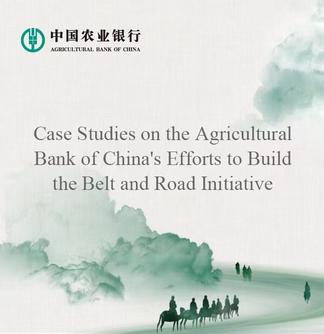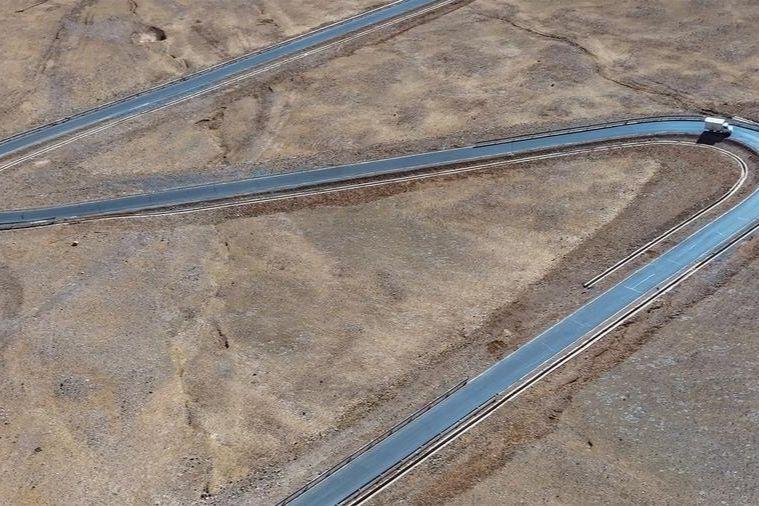
This aerial photo taken on Jan. 5, 2024 shows a truck loaded with fresh fruits and vegetables running on a mountain road toward the remote Beiga No.4 Village, 150 kilometers away from Xainza County, southwest China's Xizang Autonomous Region. (Xinhua/Tenzing Nima Qadhup)
BEIJING, July 17 (Xinhua) -- At the recently held 17th Global Food Cold Chain Conference 2025, the China Federation of Logistics & Purchasing (CFLP) introduced that China's cold chain supply chain is developing well, with comprehensive competitiveness continuously improving. Against the backdrop of accelerated restructuring of global trade and industrial and supply chains, China's cold chain development is in a new era full of opportunities.
Data released at the conference shows that in 2024, the global cold chain logistics market size reached approximately 363.8 billion U.S. dollars, with China accounting for over 20 percent. In the first half of this year, the total demand for food cold chain logistics services in China is estimated to reach about 192 million tonnes, a year-on-year increase of 4.35 percent, and the total logistics value is estimated to reach about 4.7 trillion yuan, up 4.21 percent year on year.
The industry is currently building a high-resilience supply chain system integrating domestic and international operations through a model of "three-level node construction + digital empowerment", with listed companies becoming the leaders in the industry, said Song Jia, deputy secretary-general of the China Association for Promoting UN Procurement.
-- Huge potential for industry development
China's cold chain infrastructure is gradually improving. China's international cold chain freight trains and the rail-sea intermodal service via the New International Land-Sea Trade Corridor is developing steadily, and digital and intelligent applications have achieved significant progress.
Meanwhile, the resilience of the cold chain supply chain is continuously improving. Based on a three-level node system consisting of 105 national backbone cold chain logistics bases, production and distribution centers, and two-end cold chain facilities, China is promoting coordinated operations of trunk-branch logistics and two-end distribution, and building a high-quality, efficient, safe, and resilient integrated cold chain logistics supply chain system that connects both domestic and international markets, supported by technological innovation, green transformation, and digital empowerment.
Additionally, China's leadership in international rules in the cold chain field is continuously strengthening. The first international cold chain logistics standard led by China, which is about the requirements for non-contact delivery services in cold chain logistics, was officially released in November 2024, significantly enhancing China's discourse power and influence in global cold chain logistics rule-making, and helping Chinese enterprises enter the international market more easily.
Against this backdrop, the cold chain industry is embracing huge development space. The booming development of cross-border e-commerce continues to drive up demand for cold chain logistics, while new digital models are activating "new" momentum for the cold chain.
Cui Zhongfu, chief economist at CFLP, stated that the global cold chain logistics market has enormous demand potential, with the market size expected to exceed 600 billion U.S. dollars by 2028.
Zhang Yi, CEO of Guangzhou Iimedia Data Corp., Ltd., said that the integration of cold chain logistics with AI and big data will reconstruct the value of the cold chain logistics industry.
According to data from Zhongyan Puhua Industrial Research Institute, driven by the triple engines of "policy + consumption + technology", the market size of China's cold chain logistics industry is expected to exceed 897 billion yuan, with a compound annual growth rate of over 15 percent, making it one of the fastest-growing markets globally.
-- Accelerated market layout of enterprises
To seize market opportunities, leading logistics companies are accelerating their efforts in the cold chain logistics sector, advancing layouts in intelligent and international development.
Companies like JD Logistics, Inc. have deeply applied AI and Internet of Things (IoT) technologies in cold storage management, achieving a 30-percent reduction in storage loss rate. In terms of infrastructure expansion, Inzone Group Co., Ltd. has utilized a digital and intelligent cold chain to break barriers in fresh produce circulation, with over 6,600 square meters of cold chain storage facilities built.
Changhong Meiling Co., Ltd. has used its cold storage business as a foundation to steadily expand its intelligent cold chain module through its life sciences channel system. Fujian Snowman Group Co., Ltd. has launched ultra-low temperature air refrigeration technologies and products, filling the technological gap in China's cold chain logistics sector.
Many companies are also actively "going global". SF Cold Chain Logistics Co., Ltd., by leveraging the TIR transport network, has established direct procurement bases for fruits and vegetables in Southeast Asia, driving a rapid increase in the import volume of Chilean cherries. Qingdao Hiron Commercial Cold Chain Co., Ltd. recently stated that the company remains committed to independent research and development, striving to become a world-class commercial cold chain equipment service provider.
Song Jia believes that in recent years, China has been transitioning from a phase of "filling infrastructure gaps" to a phase of "strong output of standards", and industrial chain enterprises need to seize the trend of cross-border e-commerce and explore new growth areas in sectors such as pharmaceutical cold chain and cross-border fresh produce.
Cui Zhongfu holds that in the face of new opportunities and challenges, China's cold chain industrial chain must seek new growth and create new advantages by strengthening software and hardware foundations. (Edited by Gu Shanshan with Xinhua Silk Road, gushanshan.1987@163.com)




 A single purchase
A single purchase









